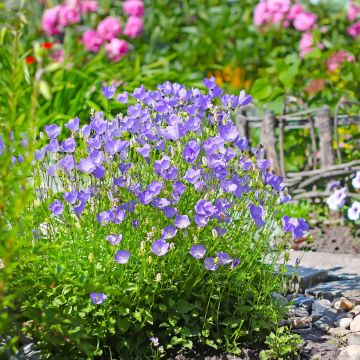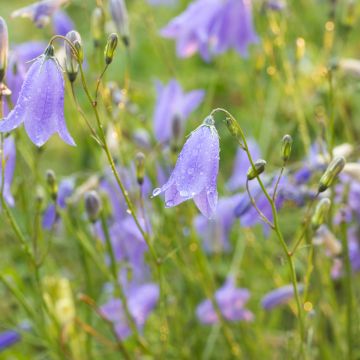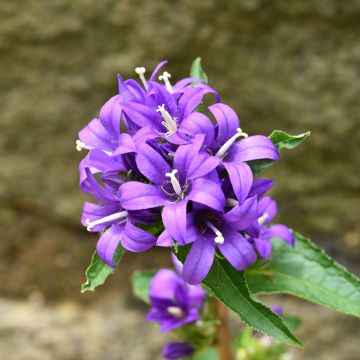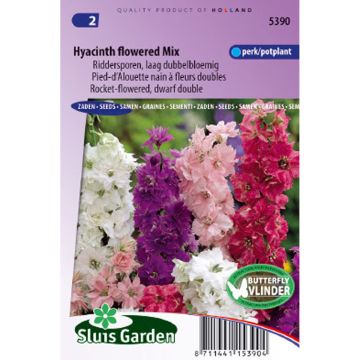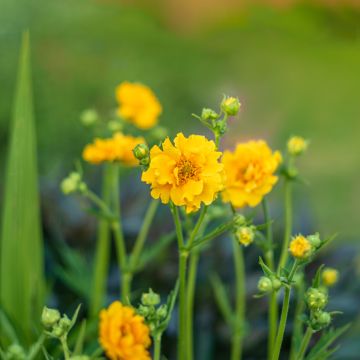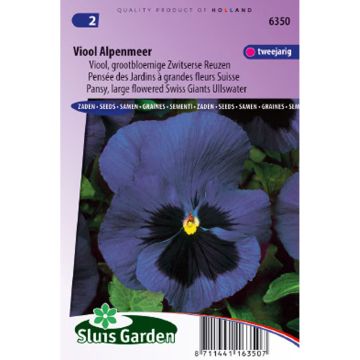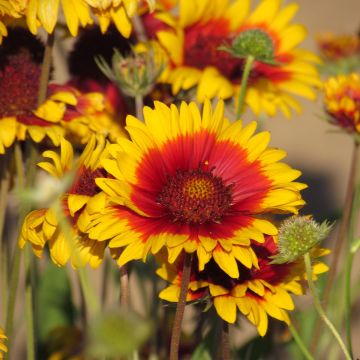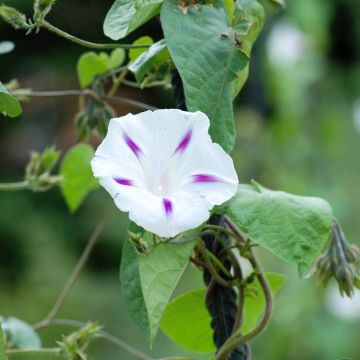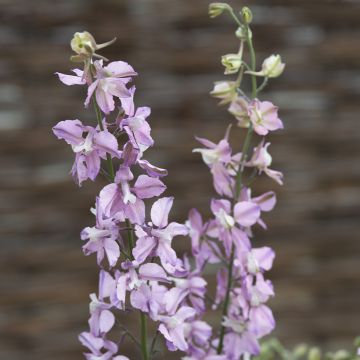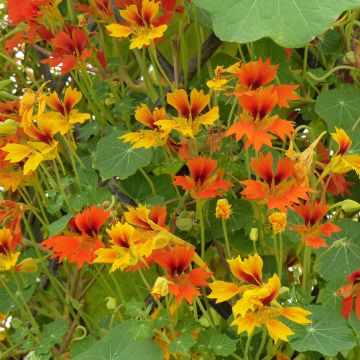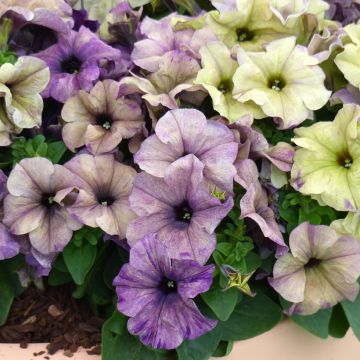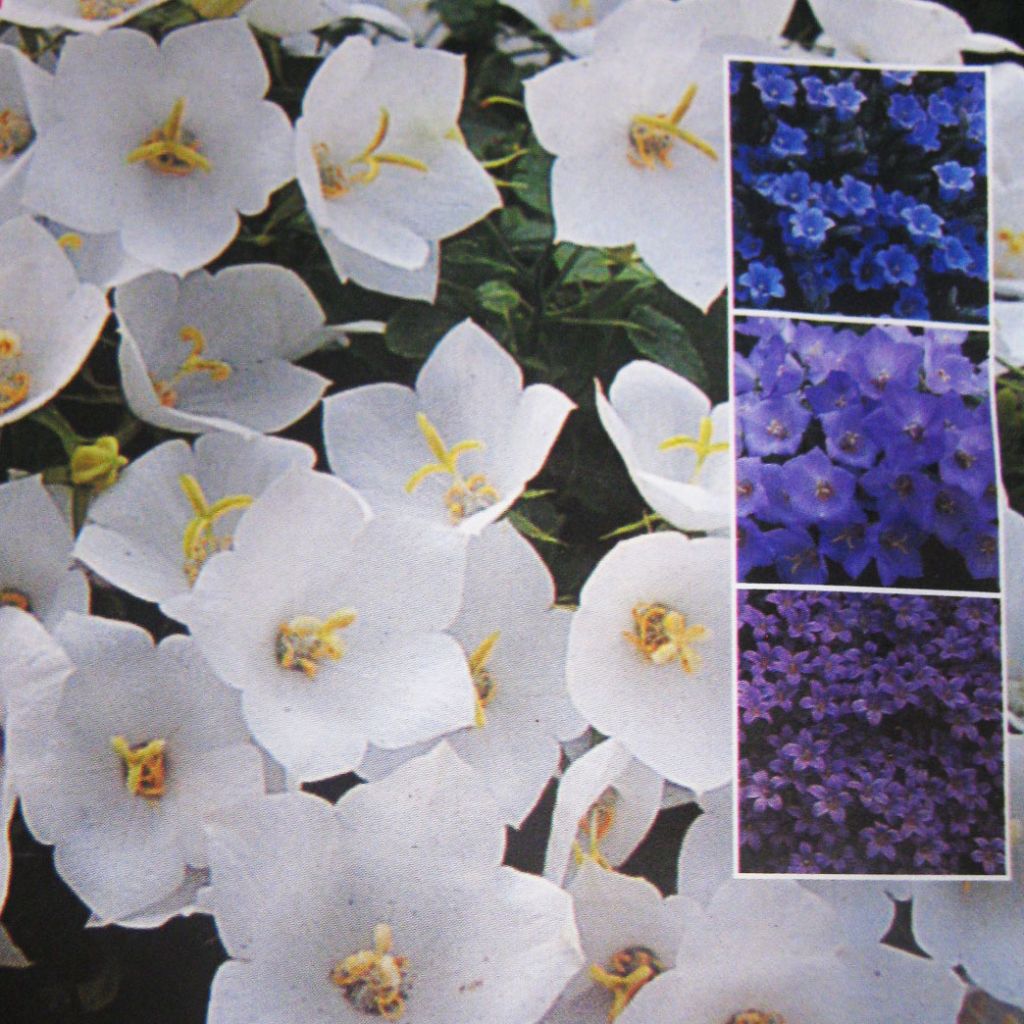

Graines de Campanule de Rocaille en Mélange
Campanula - Seeds
Campanula
Bellflower
Unable to give an objective opinion as once again the deadlines were not met even though the order was supposed to have arrived... A beautiful website but out of 2 orders placed, there were issues with the deadlines both times and at least one incomplete delivery... I am eagerly awaiting the second one... What a shame.
Fabrice A., 29/05/2018
Why not try an alternative variety in stock?
View all →This plant carries a 6 months recovery warranty
More information
We guarantee the quality of our plants for a full growing cycle, and will replace at our expense any plant that fails to recover under normal climatic and planting conditions.
Seed-only orders are dispatched by sealed envelope. The delivery charge for seed-only orders is €3.90.
Does this plant fit my garden?
Set up your Plantfit profile →
Description
This Bellflower Mix brings together different varieties of Campanula muralis. These are very low-growing and creeping perennials with evergreen foliage that offer small bell-shaped flowers in various shades of white, blue, mauve, and violet depending on the plants. Hardy and undemanding, these plants grow in even the smallest patch of soil and bloom in the sun from June to August. Sow in spring, in light and damp soil.
The rockery bellflowers belong to the Asteraceae family. This is a selection of cultivars derived from Campanula portenschlagiana (syn. muralis), a perennial herbaceous plant native to the mountains of Croatia, Serbia, Montenegro, and Bosnia-Herzegovina. It forms a low clump with weak stems, 15 cm (6in) tall and 30 cm (12in) wide, bearing persistent, rounded leaves, dark green with a greyish underside. They bloom from June to August and often rebloom in mid-autumn in damp and mild regions. Its flowers, tubular or funnel-shaped, composed of a narrow tube of about 4 cm (2in), opening into 5 distinct and spread-apart petals, are referred to as campanulate. Their colour ranges from pure white to lavender blue, through mauve and vivid or deep violet. This flowering is nectar-rich and attractive to pollinators.
Very hardy and very easy to grow, bellflowers grows wherever the soil is damp but well-drained, which is why it is quite common to find it growing at the base of a wall in a crack. Easy to grow, it can be planted as a border plant, in the joints of paving, or at the base of a small bush or even in containers. Sowing in spring will give plants that are sufficiently hardened to survive the winter and bloom the following spring.
Report an error about the product description
Flowering
Foliage
Plant habit
Botanical data
Campanula
Campanulaceae
Bellflower
Cultivar or hybrid
Other Campanula (Bellflower) seeds
Planting and care
Sow the seeds of Campanula campanulate in a nursery under cover or in place, from April to June, and in partial shade. Choose a well-drained, properly prepared and loosened soil. Sow the seeds finely, at a depth of 2mm (0.1in), respecting a spacing of 30 cm (12in) between rows. Water regularly, especially during dry periods. Germination usually takes 14 to 21 days. When the plants are large enough to handle, that is, from May to July, transplant them into individual pots, still in partial shade. Overwinter the young plants in pots, under a frame. Transplant them into the open ground in September, spacing them 10 cm (4in) apart.
Cultivation: Rockery bellflowers are undemanding plants, although they prefer a rather moist and slightly alkaline soil, even if it is poor. They dislike heavy soils, so add a mixture of sand and compost to your clay soil. For container planting, apply organic fertilizer at least once a year. They flower equally well in full sun or partial shade.
Sowing period
Intended location
-
, onOrder confirmed
Reply from on Promesse de fleurs
Flower seeds
Haven't found what you were looking for?
Hardiness is the lowest winter temperature a plant can endure without suffering serious damage or even dying. However, hardiness is affected by location (a sheltered area, such as a patio), protection (winter cover) and soil type (hardiness is improved by well-drained soil).

Photo Sharing Terms & Conditions
In order to encourage gardeners to interact and share their experiences, Promesse de fleurs offers various media enabling content to be uploaded onto its Site - in particular via the ‘Photo sharing’ module.
The User agrees to refrain from:
- Posting any content that is illegal, prejudicial, insulting, racist, inciteful to hatred, revisionist, contrary to public decency, that infringes on privacy or on the privacy rights of third parties, in particular the publicity rights of persons and goods, intellectual property rights, or the right to privacy.
- Submitting content on behalf of a third party;
- Impersonate the identity of a third party and/or publish any personal information about a third party;
In general, the User undertakes to refrain from any unethical behaviour.
All Content (in particular text, comments, files, images, photos, videos, creative works, etc.), which may be subject to property or intellectual property rights, image or other private rights, shall remain the property of the User, subject to the limited rights granted by the terms of the licence granted by Promesse de fleurs as stated below. Users are at liberty to publish or not to publish such Content on the Site, notably via the ‘Photo Sharing’ facility, and accept that this Content shall be made public and freely accessible, notably on the Internet.
Users further acknowledge, undertake to have ,and guarantee that they hold all necessary rights and permissions to publish such material on the Site, in particular with regard to the legislation in force pertaining to any privacy, property, intellectual property, image, or contractual rights, or rights of any other nature. By publishing such Content on the Site, Users acknowledge accepting full liability as publishers of the Content within the meaning of the law, and grant Promesse de fleurs, free of charge, an inclusive, worldwide licence for the said Content for the entire duration of its publication, including all reproduction, representation, up/downloading, displaying, performing, transmission, and storage rights.
Users also grant permission for their name to be linked to the Content and accept that this link may not always be made available.
By engaging in posting material, Users consent to their Content becoming automatically accessible on the Internet, in particular on other sites and/or blogs and/or web pages of the Promesse de fleurs site, including in particular social pages and the Promesse de fleurs catalogue.
Users may secure the removal of entrusted content free of charge by issuing a simple request via our contact form.
The flowering period indicated on our website applies to countries and regions located in USDA zone 8 (France, the United Kingdom, Ireland, the Netherlands, etc.)
It will vary according to where you live:
- In zones 9 to 10 (Italy, Spain, Greece, etc.), flowering will occur about 2 to 4 weeks earlier.
- In zones 6 to 7 (Germany, Poland, Slovenia, and lower mountainous regions), flowering will be delayed by 2 to 3 weeks.
- In zone 5 (Central Europe, Scandinavia), blooming will be delayed by 3 to 5 weeks.
In temperate climates, pruning of spring-flowering shrubs (forsythia, spireas, etc.) should be done just after flowering.
Pruning of summer-flowering shrubs (Indian Lilac, Perovskia, etc.) can be done in winter or spring.
In cold regions as well as with frost-sensitive plants, avoid pruning too early when severe frosts may still occur.
The planting period indicated on our website applies to countries and regions located in USDA zone 8 (France, United Kingdom, Ireland, Netherlands).
It will vary according to where you live:
- In Mediterranean zones (Marseille, Madrid, Milan, etc.), autumn and winter are the best planting periods.
- In continental zones (Strasbourg, Munich, Vienna, etc.), delay planting by 2 to 3 weeks in spring and bring it forward by 2 to 4 weeks in autumn.
- In mountainous regions (the Alps, Pyrenees, Carpathians, etc.), it is best to plant in late spring (May-June) or late summer (August-September).
The harvesting period indicated on our website applies to countries and regions in USDA zone 8 (France, England, Ireland, the Netherlands).
In colder areas (Scandinavia, Poland, Austria...) fruit and vegetable harvests are likely to be delayed by 3-4 weeks.
In warmer areas (Italy, Spain, Greece, etc.), harvesting will probably take place earlier, depending on weather conditions.
The sowing periods indicated on our website apply to countries and regions within USDA Zone 8 (France, UK, Ireland, Netherlands).
In colder areas (Scandinavia, Poland, Austria...), delay any outdoor sowing by 3-4 weeks, or sow under glass.
In warmer climes (Italy, Spain, Greece, etc.), bring outdoor sowing forward by a few weeks.




































